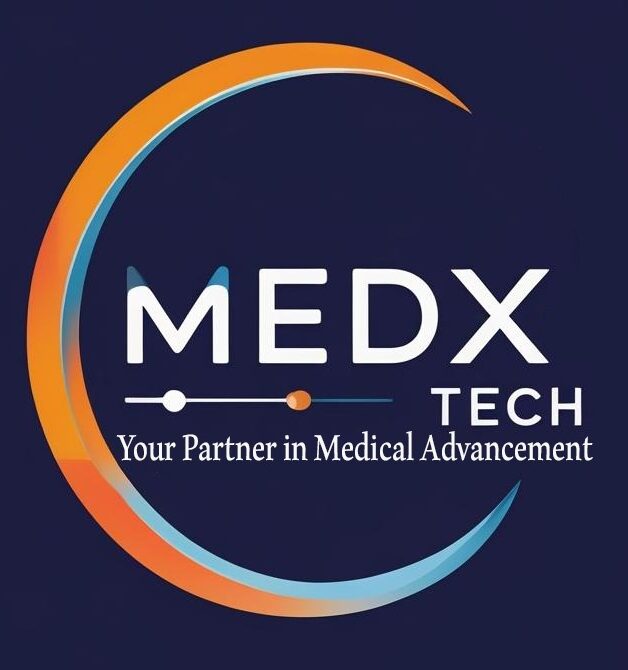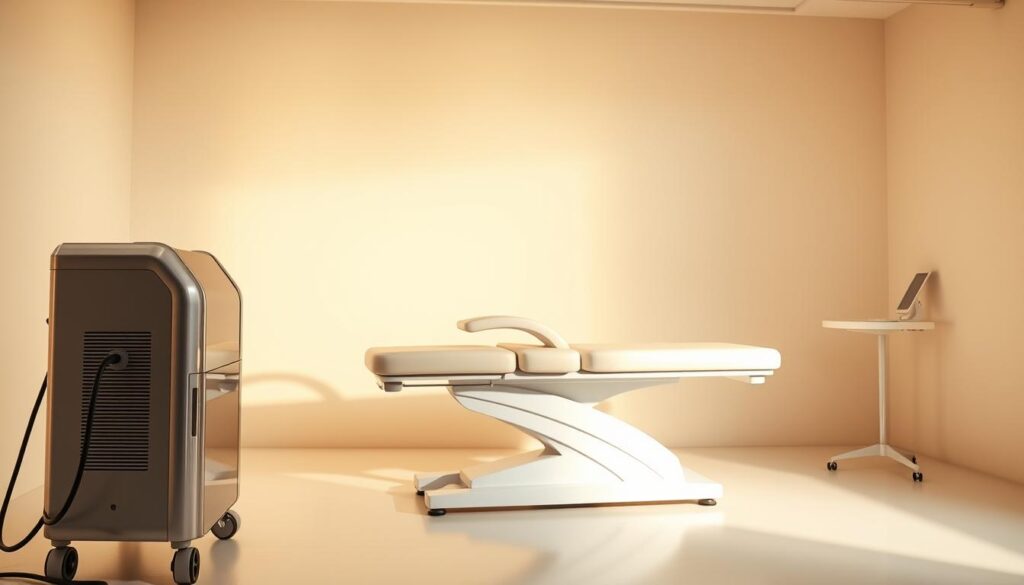Aesthetic Equipment ROI: From Up-Front Cost to Monthly Profit
Are you investing in the latest aesthetic equipment without knowing its return on investment?
As aesthetic practices grow, it’s key to make smart choices about up-front costs for long-term success.
We’ll look at why knowing the return on investment for aesthetic equipment matters. We’ll show how to move from the initial cost to making money every month.
Key Takeaways
- Understanding the ROI of aesthetic equipment is crucial for long-term success.
- Making informed decisions about up-front costs can significantly impact your bottom line.
- Transitioning from initial costs to monthly profits requires a strategic approach.
- Investing in the right equipment can boost your aesthetic practice’s profitability.
- A clear understanding of the financial aspects can help you make better investment decisions.
Understanding the Economics of Aesthetic Equipment Investment

Aesthetic practices have to make many choices when buying new equipment. They need to think about the cost and how it might make money each month. It’s key to know how our investments affect the economy.
The Importance of ROI in Aesthetic Practice Management
Return on Investment (ROI) is very important for aesthetic practices. It affects our profits. By knowing ROI, we can choose the right equipment for our money.
A clear ROI analysis helps us find the best investments. This way, we can spend our money wisely.
Common Misconceptions About Equipment Costs
Many practices only look at the equipment’s initial cost. They forget about ongoing costs like maintenance and supplies. It’s crucial to look at the total cost of owning equipment.
The Lifecycle of Aesthetic Technology Investments
Equipment investments go through a life cycle. This includes buying, setting up, maintaining, and eventually upgrading or replacing it. Knowing this cycle is key to getting the most from our investments.
By planning for each part of the cycle, our equipment can keep making money. This helps increase our monthly profits.
Calculating Aesthetic Equipment ROI: From Up-Front Cost to Monthly Profit

To boost your profits, it’s vital to figure out the return on investment (ROI) for your aesthetic gear. This means looking at different costs and how much money you’ll make. It helps you choose the best investments for your practice.
Essential Formulas for ROI Calculation
Figuring out ROI uses special formulas. They consider the cost of the equipment and how much it makes. The basic formula is: (Gain from Investment – Cost of Investment) / Cost of Investment. For aesthetic gear, it’s: (Total Money Made – Total Costs) / Total Costs.
Let’s say you spend $10,000 on a piece of equipment. It makes $15,000 in a certain time, with costs of $12,000. Your ROI would be: ($15,000 – $12,000) / $12,000 = 25%. This shows you made a profit.
Factoring in All Costs: Purchase, Maintenance, and Consumables
When figuring out ROI, remember to include all costs. This includes the initial price, upkeep, and parts. These costs can greatly affect your investment and ROI.
For example, a laser machine might cost a lot upfront but need little upkeep. On the other hand, a device needing frequent part replacements might cost less initially but more over time.
Realistic Revenue Projections by Equipment Category
Different aesthetic gear makes money at different rates. For instance, laser hair removal machines might earn differently than microdermabrasion devices. Knowing these differences is crucial for accurate revenue forecasts.
Also, think about the demand for treatments in your area. How you price your services will also affect your earnings.
Breakeven Analysis: When Will Your Investment Pay Off?
A breakeven analysis shows when your investment will start making money. It’s about finding the point where your earnings equal your costs. This is when you’ve paid back your initial investment.
For example, if your equipment costs $20,000 and you make $2,000 a month, but spend $500 on upkeep, your breakeven point is $20,000 / ($2,000 – $500) = 13.33 months.
By carefully calculating ROI, considering all costs, making realistic forecasts, and doing a breakeven analysis, you can make smart choices about your aesthetic equipment. This will help grow your practice’s profits.
Financing Options and Their Impact on Profitability

Choosing the right financing for your aesthetic equipment is key to making a profit. The option you pick can greatly affect your practice’s money health and earnings.
Cash Purchase vs. Equipment Leasing
A cash purchase means you own the equipment outright, avoiding lease payments. But, it requires a big upfront cost, which can be tough on your practice’s funds. Equipment leasing, on the other hand, spreads out the cost over time. It’s good for practices that want to save money or update their gear often.
Key considerations for leasing include:
- The total lease cost over the term
- Any penalties for early termination
- Options for upgrading or purchasing the equipment at the end of the lease
Vendor Financing Programs and Their Fine Print
Vendor financing makes buying aesthetic equipment easy, with flexible payments and sometimes low interest rates. But, it’s important to read the fine print. Look out for hidden fees or clauses that could impact your practice’s finances.
Be sure to ask about:
- Interest rates and any promotional periods
- Repayment terms and flexibility
- Any additional fees associated with the financing
Tax Considerations for Equipment Acquisition
The way you finance your equipment can affect your taxes. For example, leasing might let you deduct lease payments as business expenses. Buying outright could give you depreciation deductions. Talking to a tax expert can help you understand the tax benefits and drawbacks of your choice.
Strategies to Accelerate ROI and Maximize Monthly Profits
To get the most out of aesthetic equipment, it’s important to use smart strategies. This includes setting the right prices for treatments, boosting marketing, and improving staff training and pay. These steps can really increase a practice’s earnings.
Optimal Treatment Pricing Strategies
Setting the right prices for treatments is key to making money. Dynamic pricing models that change with demand can boost earnings. Also, offering different price levels can draw in more clients.
For example, a medspa could have three laser hair removal options: basic, premium, and elite. Each would offer different services and prices.
Marketing Tactics to Drive Equipment Utilization
Good marketing is crucial for using aesthetic equipment more. Social media campaigns and email marketing are great for promoting treatments and bringing in new clients.
Using before-and-after photos and client testimonials can also build trust and attract more people.
Staff Training and Compensation Models
Training staff well is important for getting the most from aesthetic equipment. They should know how to use the equipment and how to sell and serve clients.
A commission-based compensation model can motivate staff to sell more treatments and increase sales.
Bundling Treatments and Creating Membership Programs
Offering bundled treatments and membership plans can keep clients coming back. Discounted packages or membership plans encourage clients to come for more treatments.
| Bundling Strategy | Description | Potential Revenue Impact |
| Laser Hair Removal Package | 6 sessions for $1000 (save $200) | $500 additional revenue per client |
| Membership Program | $200/month for unlimited laser treatments | $200 monthly recurring revenue per member |
Overcoming Common Profitability Challenges
Aesthetic practices often face issues like high equipment costs and low client use. To tackle these, practices can use predictive maintenance and start client retention programs.
By tackling these problems early, practices can protect their investment and ensure a good financial return from their aesthetic equipment.
Conclusion: Transforming Equipment Investments into Sustainable Profit Centers
Transforming equipment investments into profit centers needs a detailed plan. Understanding the economics of these investments is key. Accurate ROI calculations and the right financing options are also essential.
To boost profits, setting the right treatment prices and using marketing to increase equipment use are vital. Training your staff well is also important. These steps help your aesthetic practice make more money.
Our aim is to help you make smart choices about your equipment investments. This way, your practice can grow and stay ahead in the market.
FAQ
What is the typical return on investment (ROI) for aesthetic equipment?
The ROI for aesthetic equipment changes based on the equipment type, cost, and revenue. On average, a good aesthetic device can give an ROI in 6 to 12 months. Some treatments can return even faster.
How do I calculate the ROI for my aesthetic equipment investment?
To find the ROI, add up the total cost of the equipment, including purchase, maintenance, and supplies. Then, compare this to the money it makes. The formula is: ROI = (Gain from Investment – Cost of Investment) / Cost of Investment. Make sure to include all costs and expected earnings for a clear picture.
What financing options are available for purchasing aesthetic equipment?
You can buy aesthetic equipment with cash, lease it, or use vendor financing. Each option has its benefits and drawbacks. The best choice depends on your practice’s finances and goals. Leasing might save money, while paying cash could get you discounts.
How can I maximize the profitability of my aesthetic equipment?
To boost profits, set the right treatment prices, market well, and train your staff. Also, bundle treatments and start membership programs. These steps can increase earnings and keep clients coming back.
What are some common challenges to achieving a strong ROI on aesthetic equipment, and how can I overcome them?
Challenges include not using the equipment enough, high maintenance costs, and poor marketing. To beat these, create a strong marketing plan, train your staff, and keep your equipment in good shape. By tackling these issues, you can ensure a good ROI and increase your profits.
Are there any tax considerations I should be aware of when acquiring aesthetic equipment?
Yes, taxes are important. You might deduct the equipment cost as a business expense or depreciate it over time. Always talk to a tax expert to understand how your purchase affects your taxes and improve your financial gains.
How can I conduct a cost-benefit analysis for my aesthetic equipment investment?
First, list all the costs of the equipment, like the purchase price, upkeep, and supplies. Then, guess how much money it will make and compare it to the costs. This will show if the investment is good and help you decide.
What are some strategies for accelerating ROI on aesthetic equipment?
To speed up ROI, set the right treatment prices, market smartly, and train your staff. Also, offer bundled treatments and membership programs. These steps can boost earnings and keep clients loyal.

